Category: Sakura (cherry blossom)
-
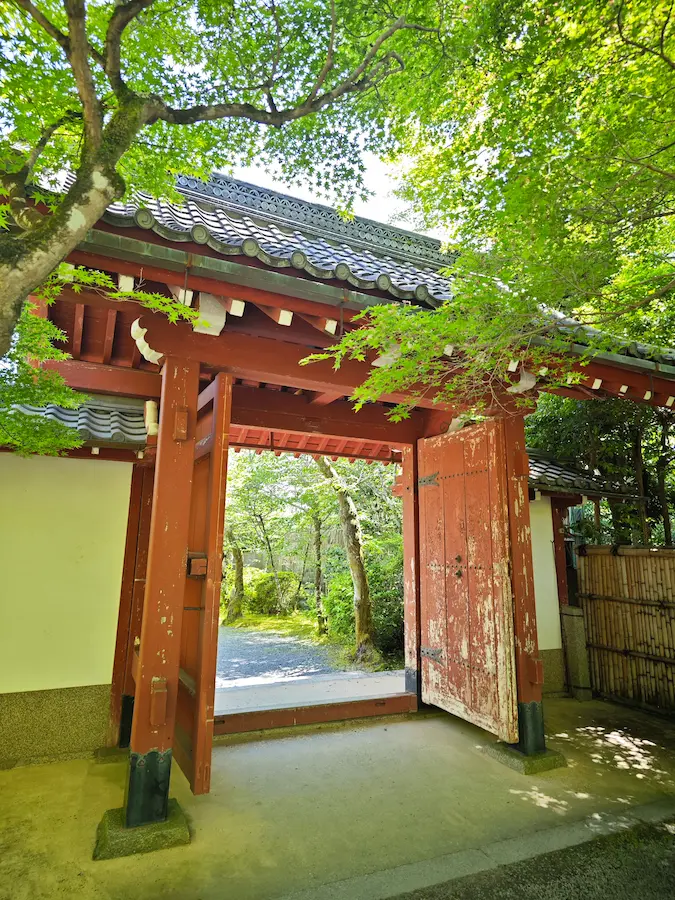
Joshoji Temple
Joshoji Temple offers a serene escape from the bustling city of Kyoto. Its connection to Yoshino Tayu adds historical depth and cultural significance. Whether you’re visiting for the cherry blossoms, autumn leaves, or just a peaceful retreat, Joshoji is a hidden gem worth exploring. Temple’s official WEB site Introduction Kyoto, Japan, is known for its…
-
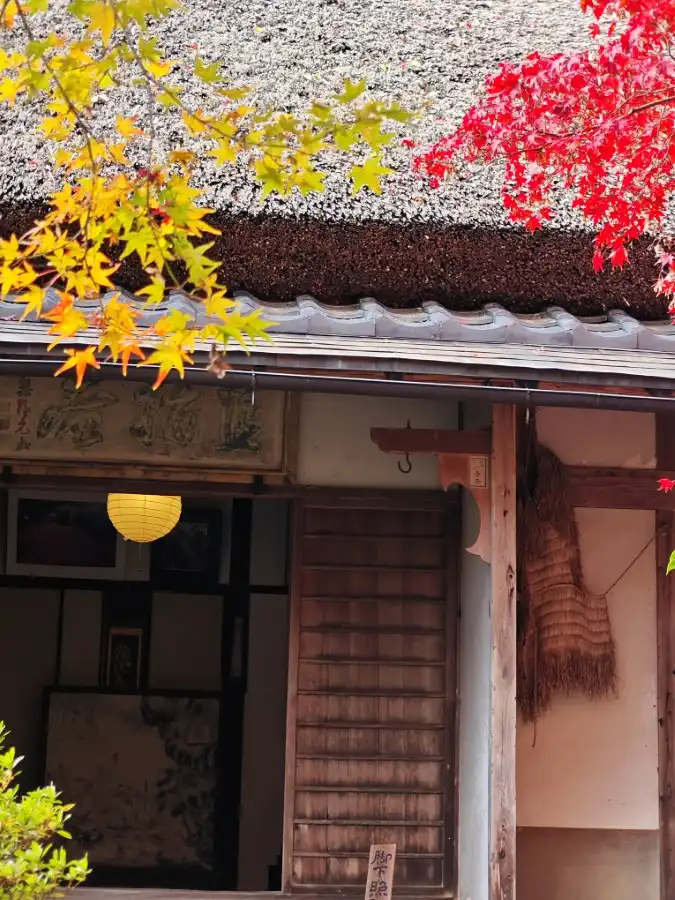
Jikishian Temple (直指庵)
Discover Kyoto’s hidden treasure, Jikishian Temple, nestled in the serene hills of Sagano. Founded in 1646, this historic site reveals the rich legacy of Obaku Zen. Renewed during the Edo period, it boasts a reed-thatched main hall, Aiai Jizo statues for luck in marriage, and vibrant seasonal foliage, especially during fall. Embrace the tranquility of…
-
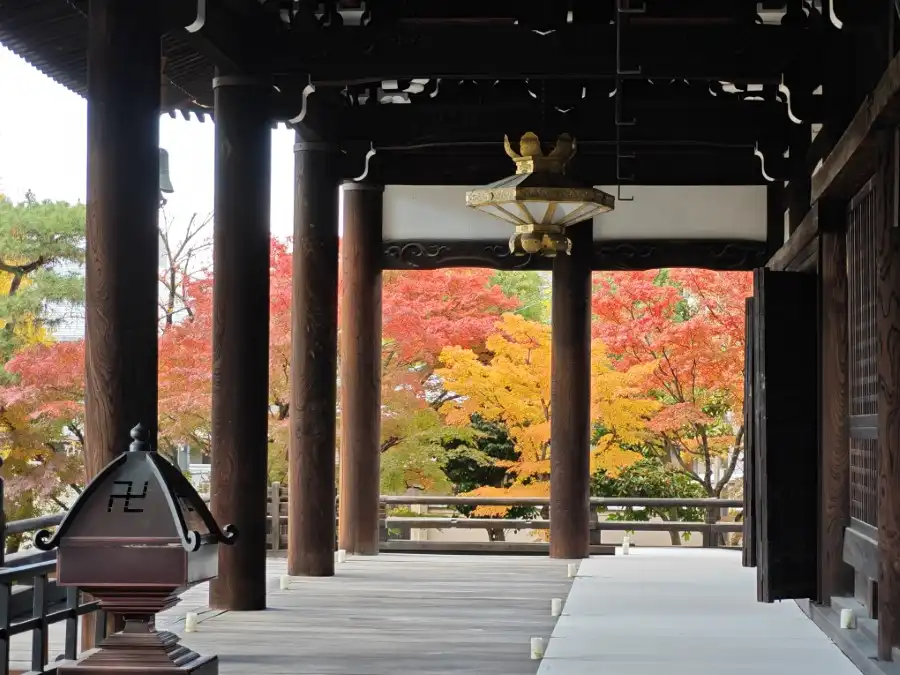
Myokenji Temple (妙顯寺)
Embark on a journey through history and spirituality at Myokenji Temple, the heart of Nichiren Shu in Kyoto’s Kamigyo-ku. Founded in 1321 by Nichizo, a missionary bestowed land by Emperor Godaigo, the temple became the fundamental Hokke school sanctuary in Kyoto. Despite challenges, including attacks by the Hieizan Enryakuji sect, the temple persevered. Today, Myokenji…
-
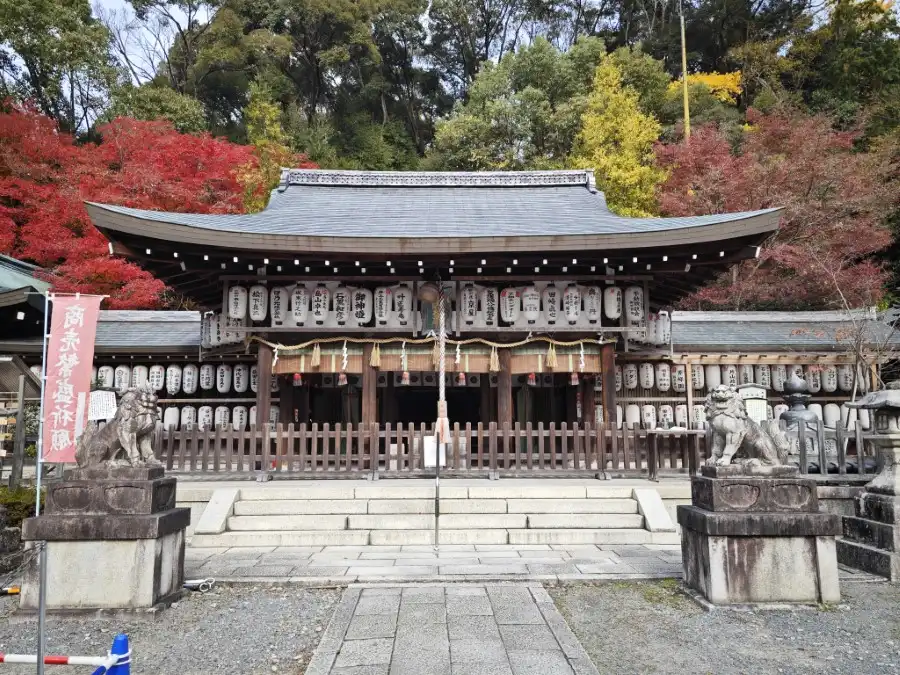
Kumano Nyakuoji Jinja Shrine (熊野若王子神社)
Emperor Go-Shirakawa founded the Kumano Nyakuoji Jinja Shrine in 1160 by inviting the Kumano Gongen (a deity) from Kishu. It is one of the three Kumano shrines in Kyoto. Other two are Kyoto Kumano Jinja Shrine and Imakumano Jinja Shrine. Of the three shrines in Kumano, this shrine represents the Nachi-taisha. At the same time,…
-
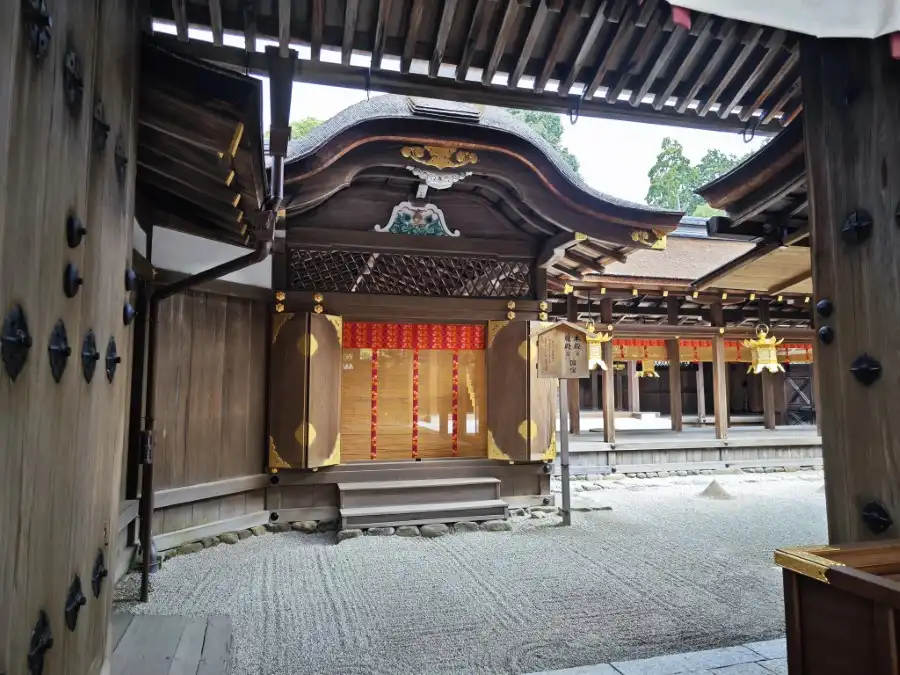
Kamigamo Jinja Shrine (上加茂神社)
The official name of Kamigamo Jinja Shrine is Kamowakezuchi Jinja Shrine. This shrine is dedicated to Kamowakeikazuchi-Okami. The entire area of the shrine is a part of World Heritage site, with two national treasure buildings and 41 important cultural properties. The main shrine is not normally visible from the outside, but you can see the…
-
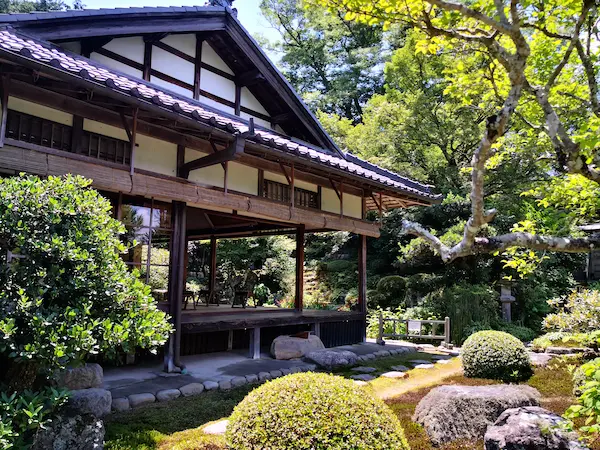
Jikkoin Temple (実光院) in Ohara
Jikkoin Temple in Ohara is a monastery of nearby Shorinin Temple, which used to be the main hall of a sub-temple of Gyozan Taigenji. In addition to this temple and Hosenin Temple, there used to be many other monastery buildings such as Fugenin and Rikakuin. The Temple’s official WEB site tells the history of the…
-
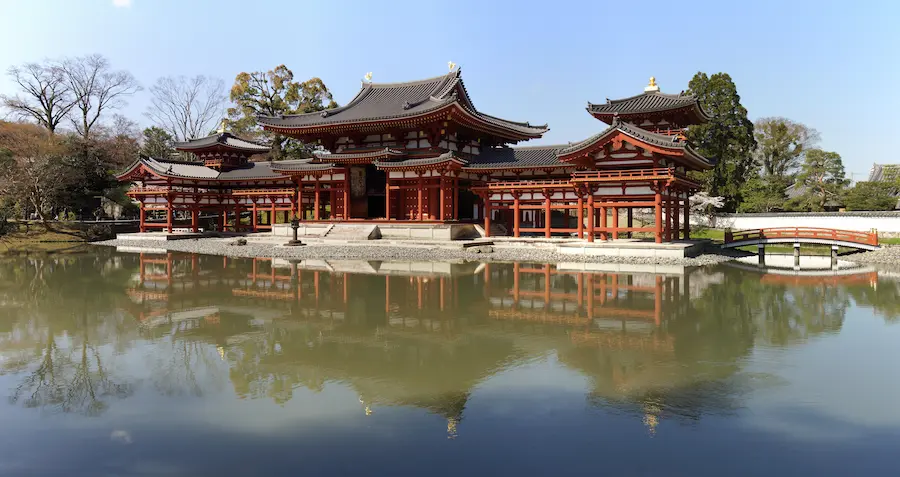
Byodoin Temple (平等院)
Byodoin Temple in Uji represents the beauty of Heian Period. It is a Buddhist temple located in Uji City, south of Kyoto City. It is one of the best preserved national treasures in Japan and a World Heritage Site. (Official WEB site) Byodoin was built in the south of Heian-kyo during the mid-Heian period. The…
-
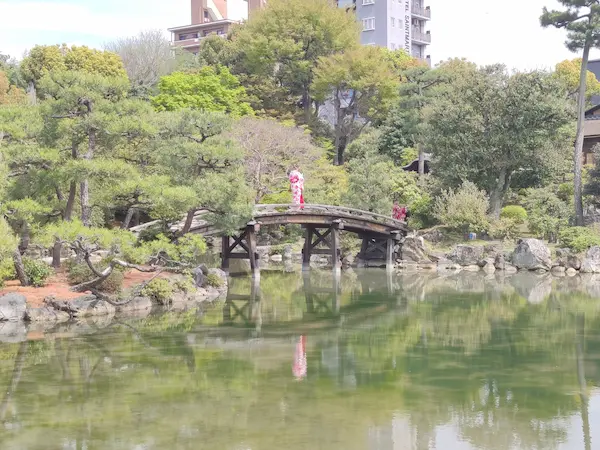
Shoseien Garden (渉成園)
Shoseien Garden is a garden managed by Higashi Honganji Temple, where the third shogun, Tokugawa Iemitsu, donated the land in 1641 and created a garden with the style of Ishikawa Jozan. In 1936, the garden was designated a national place of scenic beauty. Official WEB site This garden creates an oasis in a busy district…
-
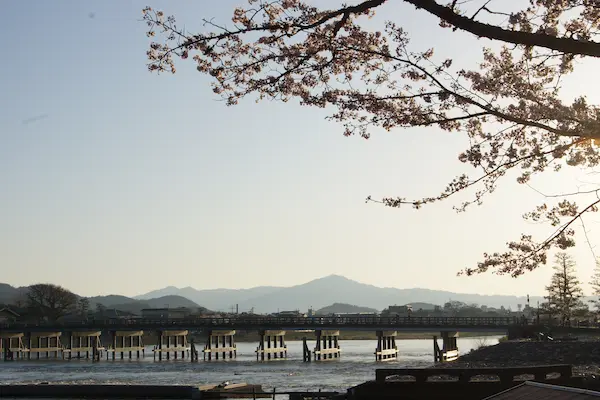
Togetsukyo Bridge (渡月橋)
The Togetsukyo Bridge spans the Katsura River. It’s always crowded with tourists, but the view from here is spectacular. No wonder so many travelers come here. It is said that the bridge was first built by the monk Dosho during the Shōwa period (834-848). And a wealthy merchant Sumunikura Ryoi built the bridge in its…
-
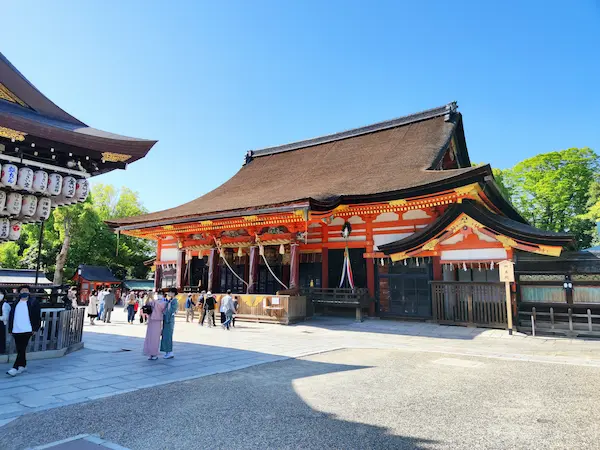
Yasaka Shrine (八坂神社)
About the Shrine Yasaka Shrine is an old shrine that has been here since before the capital moved to Heian-kyo (present Kyoto) in 794. And it has been popularly called “Gion-san”. The main deity, Susanoo-no-Mikoto, is believed to be the god of purification from all kinds of misfortune, and many gods are enshrined in numerous…
-
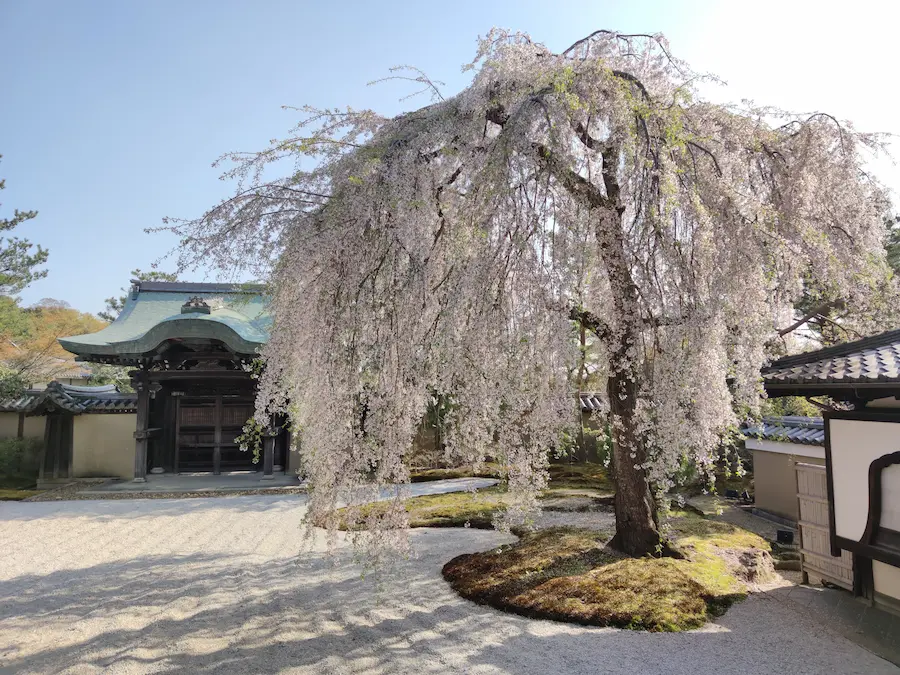
Kodaiji Temple (高台寺)
Kodaiji Temple is located between the famous Kiyomizu-dera Temple and Yasaka-Jinja Shrine, up the mountain side from a narrow path commonly called Nene-no-michi. Temple’s official WEB site History of Kodaiji Temple Hideyoshi Toyotomi’s wife, Nene (Kita-no-Mandokoro) founded the Kodaiji Temple in 1606 as a place of mourning for Hideyoshi. There are many important cultural assets…
-
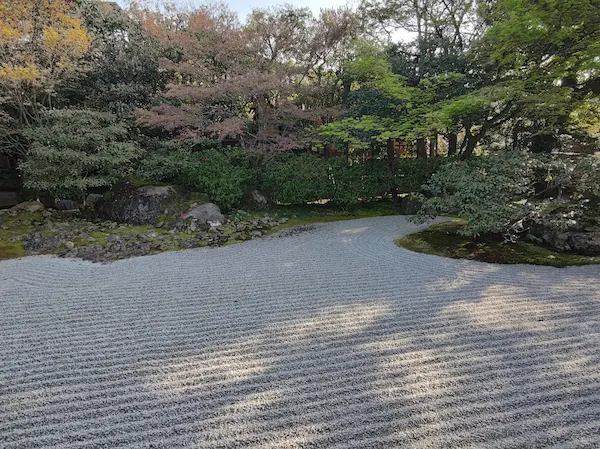
Entoku-in Temple (圓徳院)
Entoku-in Temple is a temple of the Kenninji School of Rinzai Zen Buddhism located in Higashiyama-ku, Kyoto. It is a sub-temple of Kodaiji Temple. It is known as the place where Hideyoshi Toyotomi’s wife, Nene, made her own residence in her later years and is also said to be the place of her demise, according…
-
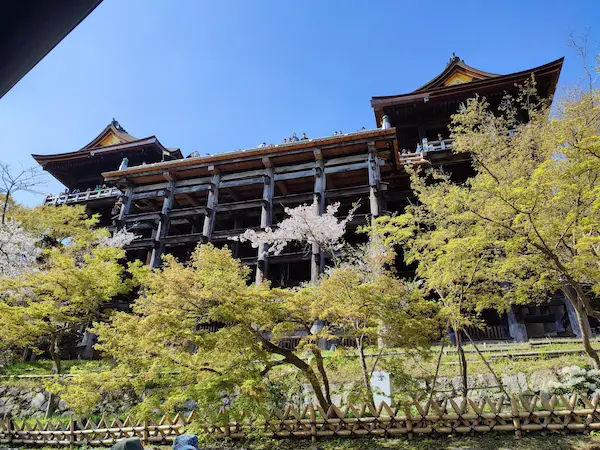
Kiyomizu-dera Temple (清水寺)
Kiyomizu Temple, one of the World Heritage Sites and famous for the stage of Kiyomizu. The precincts of Kiyomizu-Dera Temple are located on the eastern side of Kyoto, halfway up Mount Otowa. Kiyomizu-Dera Temple has more than 30 pagodas and buildings, including national treasures and important cultural properties. Since its foundation, fire destroyed the temple…
-
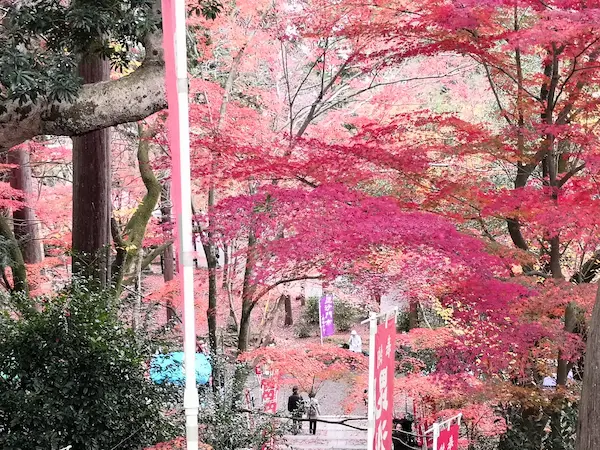
Bishamondo Monzeki (毘沙門堂門跡)
History of Bishamondo in Yamashina Bishamondo monzeki, in Yamashina, is a temple of the Tendai sect of Buddhism. It dates back to 703 when the Emperor Monmu requested the construction. When it was initially established, it lay north of the Kyoto Imperial Palace. It bore the name “Izumo-ji Temple.” After war and burning down, the…
-
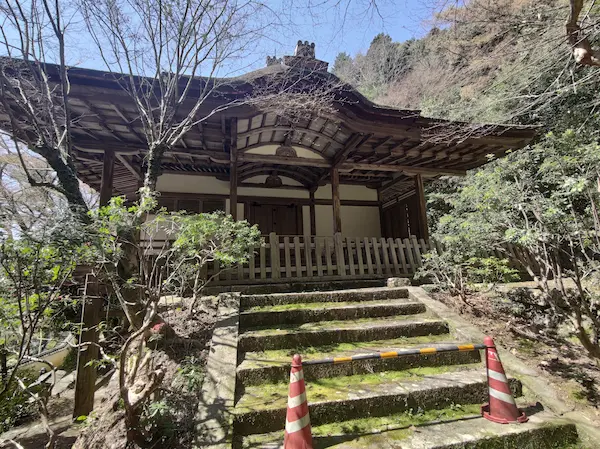
Kami-Daigo (上醍醐), Upper complex of Daigoji Temple
Daigoji Temple is divided into two parts: the upper part of the temple and the flat area. The flat area is well-known Daigoji Temple. And the upper part is called Kami-Daigo, where the older complex of Daigoji Temple exists. This is the birthplace of Daigoji Temple since 874. Daigo water, which has been gushing since…
-
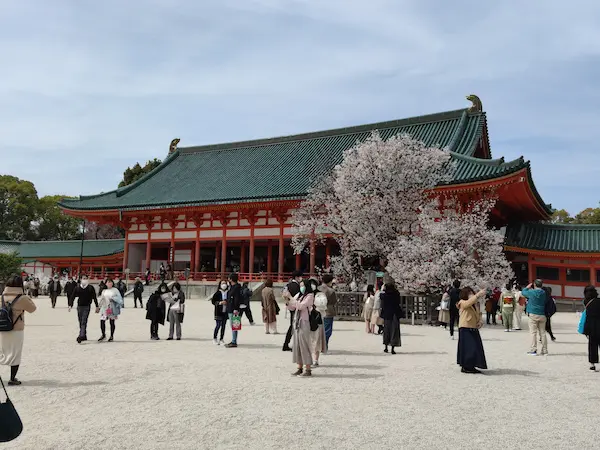
Heian Jingu Shrine (平安神宮)
Heian Jingu Shrine was built in 1895 to commemorate the 1,100th anniversary of the transfer of the capital to Heian-kyo and to worship Emperor Kanmu, the creator of the Heian-kyo Capital. The shrine was not built in the Heian period. At the time, Kyoto was in a state of decline. The city was devastated by…
-
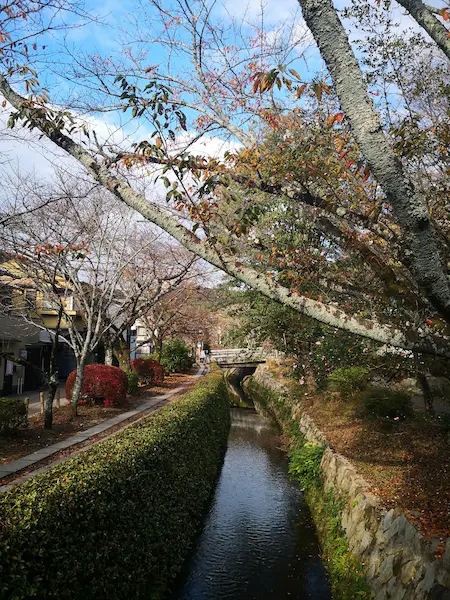
Philosopher’s Path (哲学の道)
Philosopher’s Path is a beautiful 2-kilometer walkway that connects Ginkakuji Temple and Nanzenji Temple. The name “Philosopher’s Path is not official one. The name is familiar because the surrounding scenery and serene atmosphere make it an ideal place for philosophical contemplation; it is named after the early 20th century philosopher, Kitaro Nishida, a professor at…
-
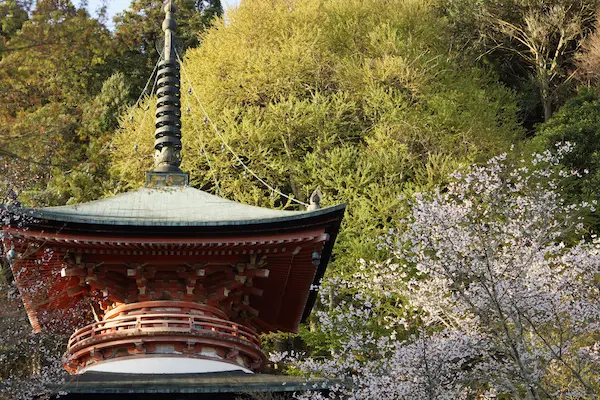
Horinji Temple (法輪寺)
A little south of the Togetsukyo Bridge is Horinji Temple. The Kuzunoi-gu Shrine, also associated with the Hata clan, seems to have existed in the Kofun period. And the temple is an ancient temple said to have been founded by Gyoki in 713. Kukai and Nichiren also trained at this temple. In the Heian period,…
-
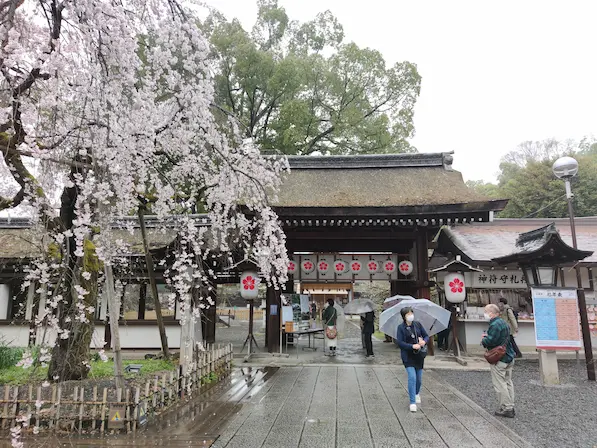
Hirano Jinja Shrine (平野神社)
Hirano Jinja Shrine is famous for its cherry blossoms. Admission to the garden with many cherry trees is charged during the flowering season. The area around the main shrine (an important cultural property) is free all year round. The origin of Hirano Shrine is old. It was originally built in the Heijo-kyo Capital (Nara). The…
-
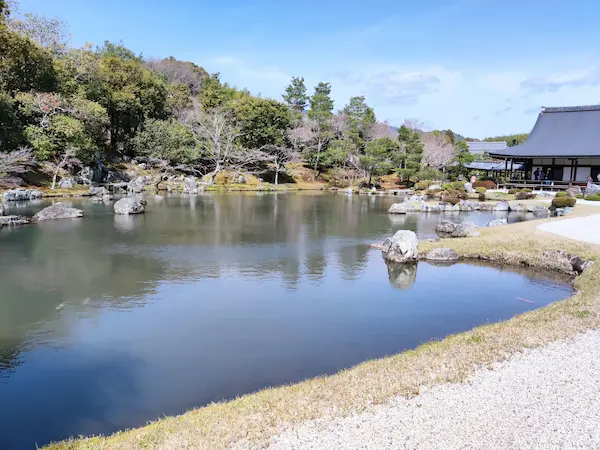
Tenryuji Temple (天龍寺), Arashiyama
Tenryuji Temple in Arashiyama is one of the World Heritage Sites in Kyoto. It is the head temple of the Tenryuji School of Rinzai Zen Buddhism, founded by Ashikaga Takauji and Soseki Muso. The temple was built to mourn the loss of Emperor Godaigo, who was an enemy of Ashikaga Takauji, so to speak. Before…
-
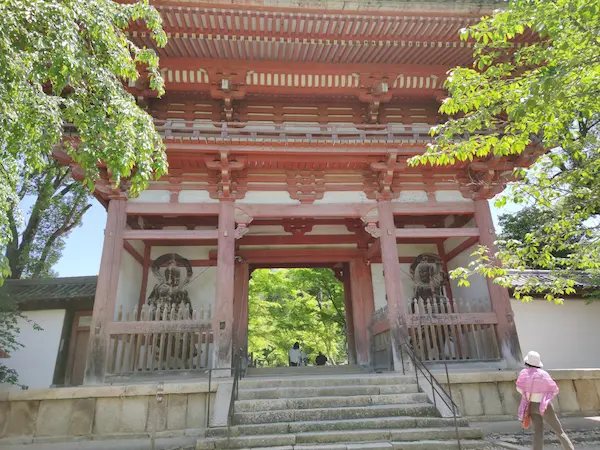
Daigoji Temple (醍醐寺)
Daigoji Temple is a World Heritage-designated temple and it is in Fushimi-ku, Kyoto. The temple is located a bit far from the central area of Kyoto, so despite its incredible temple, visitors are limited. It is the head temple of the Daigo school of the Shingon sect of Buddhism. The temple is famous for “Daigo…
-

Sanboin Temple (三宝院), Daigoji Temple
It’s history Sanboin, the sub-temple, is entered from the side of the Daigoji Temple reception desk. Sanboin was built in 1115 and served as the main temple where the head priest of Daigoji resided. The present facility was developed after Toyotomi Hideyoshi’s cherry blossom viewing in Daigo in 1598. The garden was basically designed by…
-
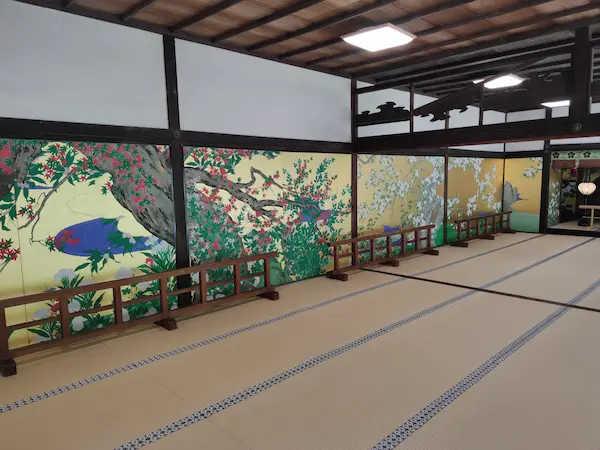
Chishakuin Temple (智積院)
Chishakuin Temple in Kyoto is the head temple of the Chizan School of Shingon Buddhism. Originally it was in Wakayama Prefecture as one of the sub-temples of the Daidenpoin Temple. Later it was rebuilt in Kyoto in 1598 after a war. Garden Chishakuin Temple has a famous pond garden facing the Daishoin (main drawing room).…
-
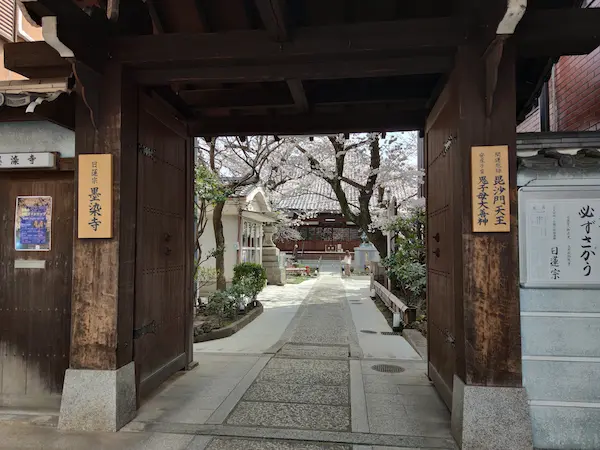
Bokusenji Temple (墨染寺)
Bokusenji Temple is also known as Sakura-dera Temple, and the name of the nearby train station is also Bokusen. In the Heian period (794-1185), a poet, Mineo Ueno, composed a poem at the death of Mototsune Fujiwara, saying, “Cherry blossoms in the fields of Fukakusa, if you have a heart, bloom only this year in…
-
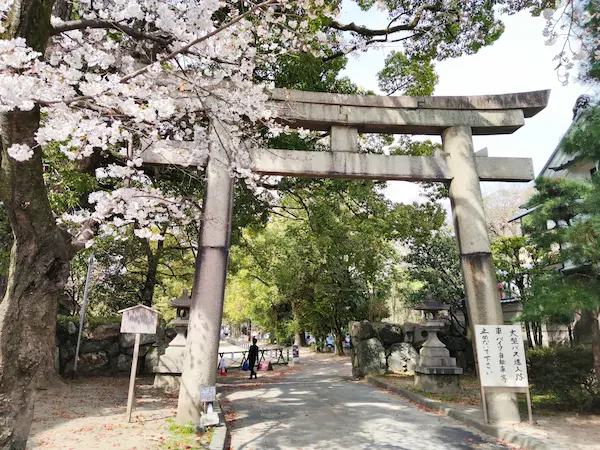
Fujimori Jinja Shrine (藤森神社)
The legendary Empress Jingu might found the Fujimori Jinja Shrine. If it is so, the shrine had existed long before the capital moved to Heian-Kyo Capital in the year 794. There are beautiful wisteria tunnels and wisteria arches in the precincts of Fujimori Shrine. In spring, when the wisteria flowers are in full bloom, many…
-
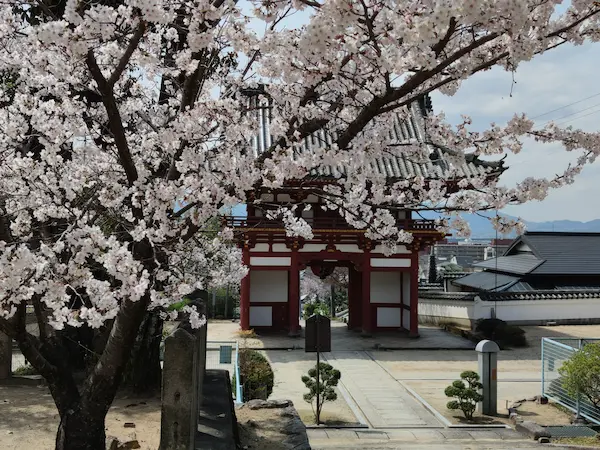
Hotoji Temple (宝塔寺)
Hotoji Temple is located south of Fushimi Inari Taisha Shrine and Sekihoji Temple. Few tourists visit here. According to temple legend, Fujiwara no Mototsune, the Kanpaku (highest ranking officer) of the time, founded the temple in the early Heian period (late 9th century). At that time, it was Gokurakuji temple of the Shingon sect of…
-
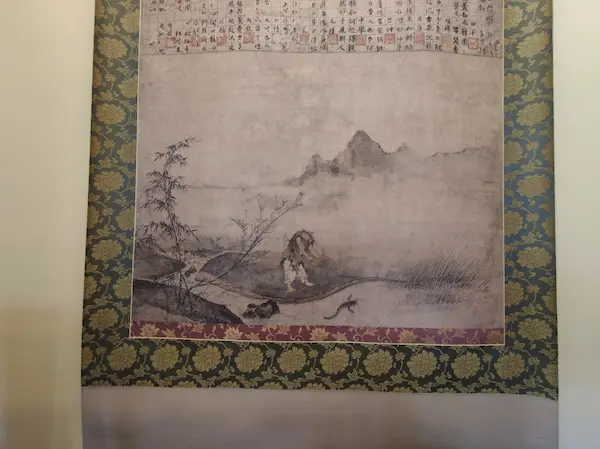
Taizo-in (Myoshinji) Temple 退蔵院
One of the sub-temples near the Myoshinji Butsuden is Taizo-in Temple. This temple is home to the National Treasure “Hyonenzu,” the historic site and place of scenic beauty “Motonobu’s Garden,” a dry landscape garden, and the pond garden “Yokoen,” a garden with a circular garden. Unfortunately, Hyonenzu is not open to the public and you…
-
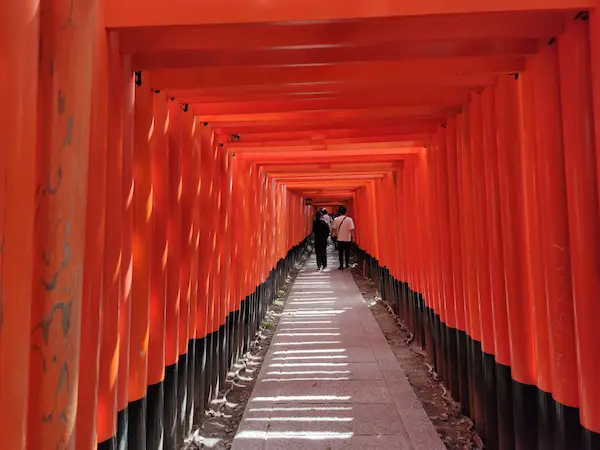
Fushimi Inari Taisha Shrine (伏見稲荷大社)
Fushimi Inari Taisha is one of the most famous shrines in Japan, located in Fushimi-ku, Kyoto. Its distinctive red corridor of torii gates attracts many tourists from Japan and abroad. (Shrine’s official WEB site) The Inari-daimyojin is the deity of the main shrine, and people pray for prosperous business, traffic safety, and academic success. In…
-
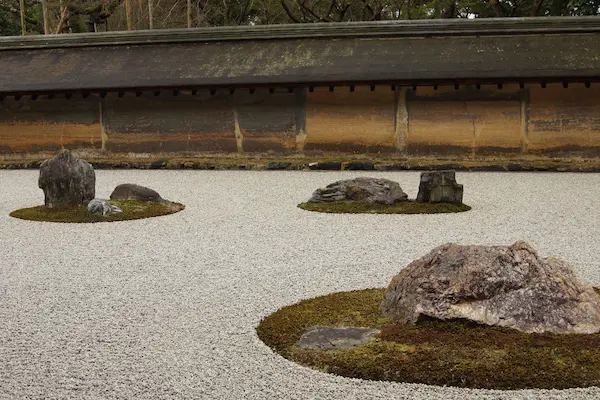
Ryoanji Temple (龍安寺)
Founded in 1450 by Katsumoto Hosokawa, Ryoanji Temple in Kyoto captivates with its iconic karesansui (dry landscape) rock garden, created around 1499. Comprising 15 precisely arranged rocks in white gravel, the garden embodies Zen Buddhism principles—simplicity, harmony, and abstraction. A single rock remains hidden, sparking contemplation. The tranquil setting, free from trees and plants, fosters…
-
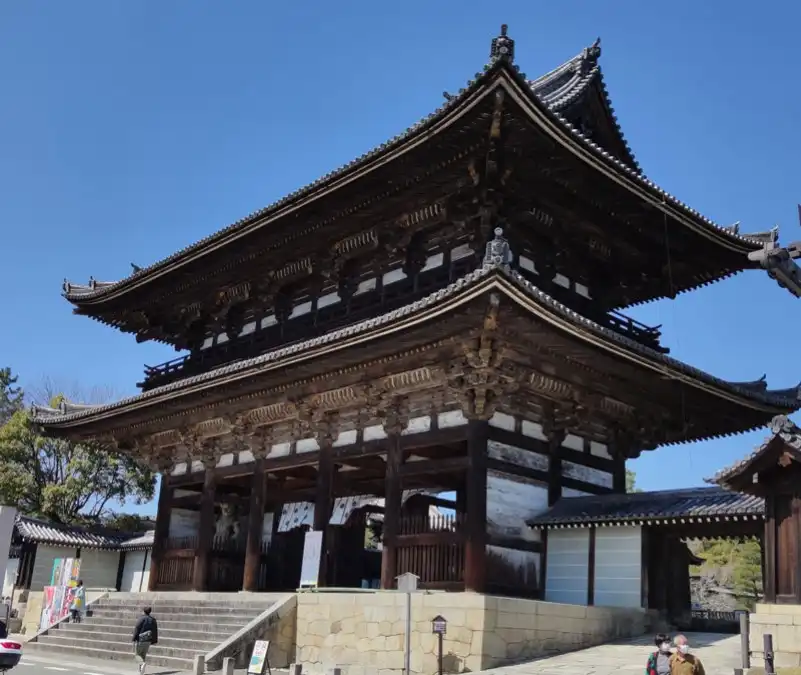
Ninnaji Temple (仁和寺)
Ninnaji Temple, a UNESCO World Heritage Site in Kyoto, offers a journey through time. Founded in 888, this Shingon Buddhist temple showcases exquisite architecture and cultural treasures. Explore the historic Nio-mon Gate, the revered Kondo (main hall), and the rare five-story pagoda. Delve into the serene gardens, including the Omuro Cherry Blossom Garden. Immerse yourself…